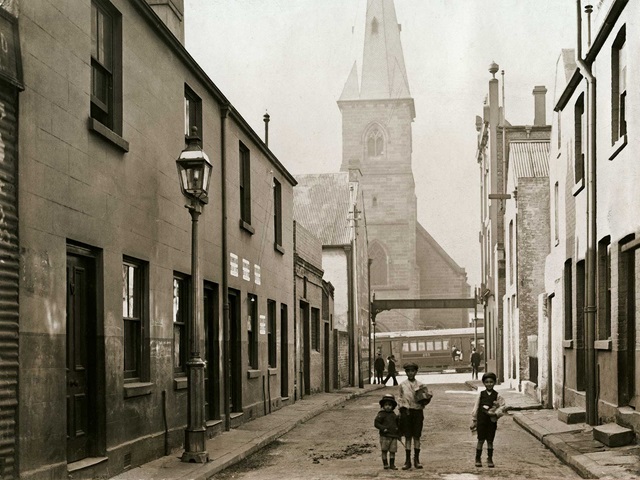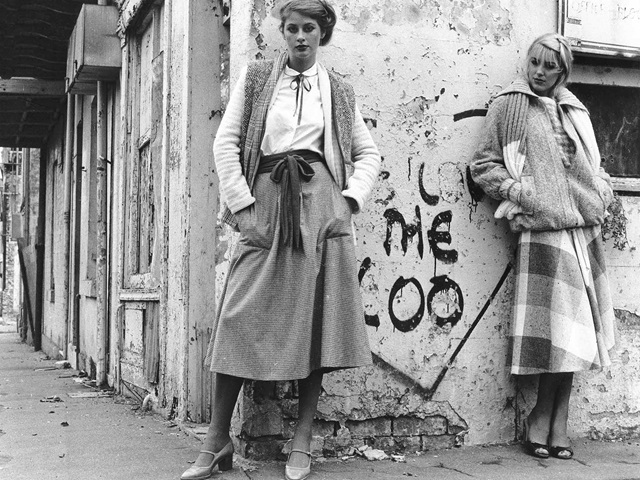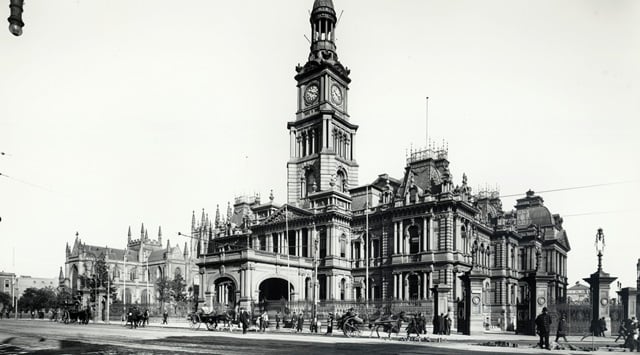History of Redfern Park
Originating in the 1880s as a typical Victorian pleasure garden, the park was later the site of Paul Keating’s famous 1992 speech.

Redfern Park is bounded by Elizabeth, Redfern, Chalmers and Phillip streets, Redfern.
It was designed and constructed during the 1880s as a typical Victorian pleasure ground with ornamental gardens, cricket pitches, bowling green and a bandstand. During the early 20th century sporting facilities became more prominent.
Tennis courts replaced the bowling green, rugby league arrived here in 1911, and a variety of community groups used the oval for cricket, baseball, boxing and other sports. As sports became more popular there was a need for facilities such as spectator seating and changing rooms.
This land was granted to Edward Smith Hall, editor of the ‘Sydney Monitor’ newspaper in 1822, but he immediately sold it to Solomon Levey. Redfern owes its name to Dr William Redfern who arrived in Sydney as a convict in 1801, having been court-martialled for his part in the great British naval mutiny of 1797. He won the friendship of Governor Macquarie, becoming his personal family physician.
The land remained undeveloped for many decades as it was a dangerous ‘pestiferous bog’ known as Boxley’s Lagoon.
In 1885, 12 acres were resumed by Redfern Council and gazetted as a park. Work to form the park began immediately and just as quickly the council was inundated with requests from community groups to use the new oval on the southern half of the park for cricket and rugby union. A bowling green and pavilion were added in 1890, along with a bandstand and an ornamental fountain donated by John Baptist.
One of the most famous incidents associated with Redfern Oval was in 1903 when legendary cricketer Victor Trumper, playing for Paddington against Redfern, straight drove a ball out of the oval and through the second-floor window of the boot factory across the road, where the Moreton on the Park apartments now stand.


In November 1919 the foundation stone was laid for the Redfern Fallen Soldiers’ Memorial. A trophy gun was installed at around the same time but removed in 1941 because damage had made it dangerous for children to play on.
The rise in popularity of tennis in the inter-war years saw the bowling green replaced by lawn tennis courts in 1934. The concentration on sports facilities had seen some decline in the ornamental gardens but in the late 1930s the fountain and paths were repaired and other maintenance undertaken.
Band concerts in the park’s bandstand were a popular form of public entertainment, and by the 1930s large crowds attended these performances on Sunday afternoons.
In 1946 South Sydney Rugby League Club proposed to make Redfern Oval its home ground, which Redfern Council accepted. The earth mounds for spectator seating and the old pavilions were remodelled in 1947. In 1957 a grandstand was built which was named after Reg Cope, an alderman from 1950 to 1960.
The oval continued to be the home ground for the South Sydney Rabbitohs until the opening of the Sydney Football Stadium at Moore Park in 1988.
In December 1992 Prime Minister Paul Keating came here to launch the UN International Year of Indigenous People. The Redfern Park speech, as it became known, was a defining moment in the nation’s reconciliation with its Aboriginal and Torres Strait Island people:
‘The starting point might be to recognise that the problem starts with us non-Aboriginal Australians. It begins, I think, with the act of recognition. Recognition that it was we who did the dispossessing. We took the traditional lands and smashed the traditional way of life. We brought the disasters. The alcohol. We committed the murders. We took the children from their mothers. We practised discrimination and exclusion. It was our ignorance and our prejudice. And our failure to imagine these things being done to us. With some noble exceptions, we failed to make the most basic human response and enter into their hearts and minds. We failed to ask – how would I feel if this were done to me?’
Redfern Park is one of the most attractive inner-city parks in Sydney with a proliferation of fine mature trees including the landmark fig trees and Canary Island palms, expanses of grass and several historical monuments. Its Victorian character provides a green oasis within Redfern town centre which is much appreciated by local residents.
Baptist Fountain
The ornate fountain in the centre of the park was donated by local nurseryman John Baptist in 1889 and refurbished in 1991.
War Memorial
The war memorial was erected in 1919 to commemorate 137 local men ‘who gave their lives for God and King in the cause of humanity in the Great War 1914-1919’. It is surmounted by a marble figure of a soldier which originally stood on a column, but this was removed after it blew down in a storm in 1975.
Redfern Oval
A major redevelopment of Redfern Oval was carried out in 2007 to provide modern training facilities for the South Sydney Rabbitohs Rugby League Club. This involved the removal of the Reg Cope stand and levelling of the site.
Further reading
Clouston Landscape Planners, ‘Redfern Park Plan of Management’, June 1996 (2 volumes).



